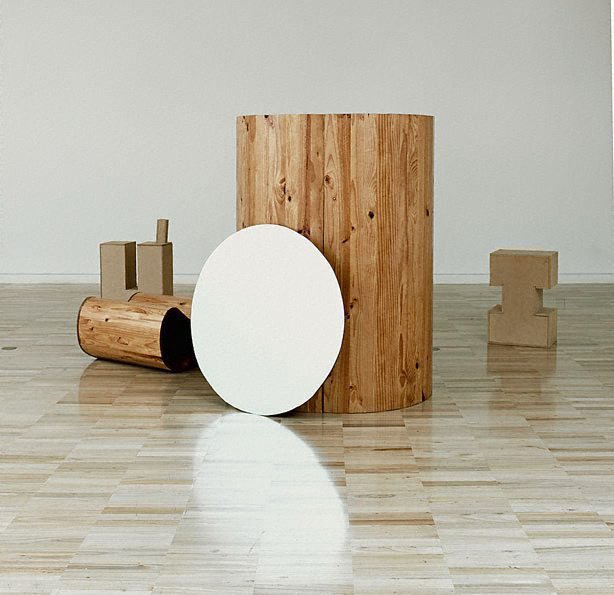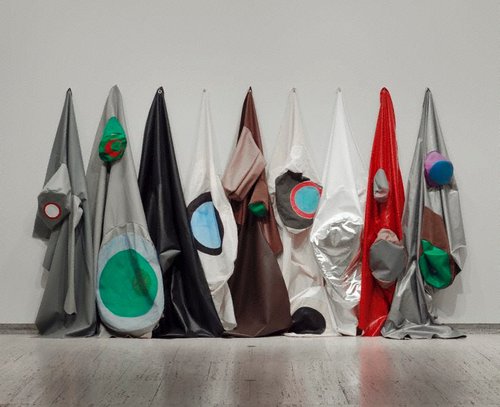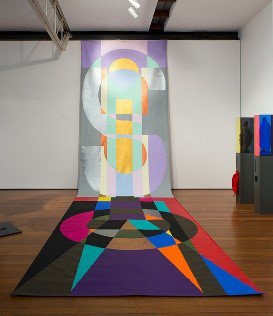
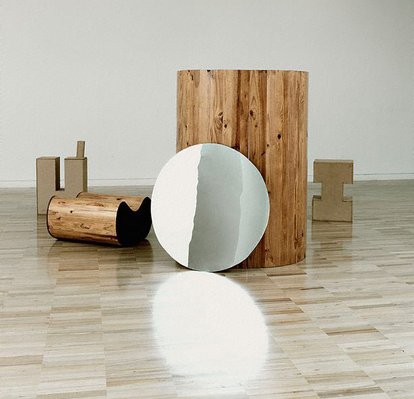
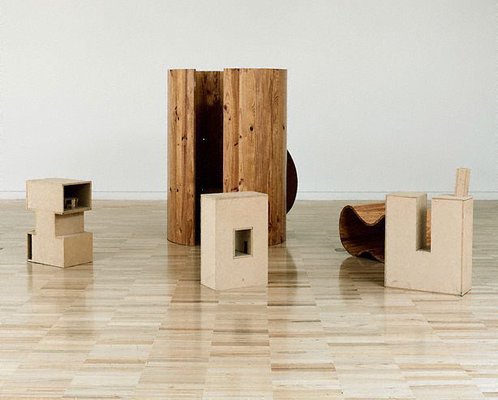
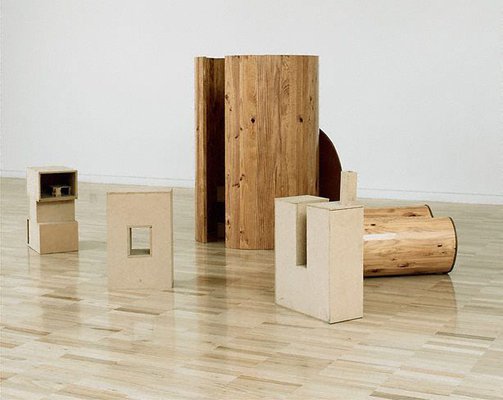
-
Details
- Date
- 1999
- Media category
- Mixed media
- Materials used
- wood, glue, marine varnish, acrylic
- Dimensions
- dimensions variable
- Credit
- Gift of the artist 2002
- Location
- Not on display
- Accession number
- 130.2002.a-i
- Copyright
- © Mikala Dwyer. Courtesy Roslyn Oxley9 Gallery.
- Artist information
-
Mikala Dwyer
Works in the collection
- Share
-
-
About
Many of Mikala Dwyer’s seemingly abstract sculptural forms and her more directly representational sculptures originate in her interest in shelter, the home and urban structures. This interest often focuses on such primary manifestations of the desire for habitation as a child’s urge to construct cubby houses, small domains in which children exert control over their environment and the meanings of things. Dwyer’s work is characterised by a playful and excessive accumulation of elements, and she has created installations out of fabric, play dough, stockings, felt, vinyl, plastic, organza and nail varnish. Her choice of materials has been identified as feminine and by extension as a subtle feminist critique of recent art history. However her teasing references to modernist abstraction, the more organic forms of minimalism and to pop art (such as the saggy Kenneth Noland-like target forms and Oldenburg-esque baggy vinyl shapes in ‘Hanging eyes’) are an acknowledgment of antecedents rather than necessarily having a critical agenda.
The room installation ‘iffytown’ is comprised of four components – ‘un’, ‘Hanging eyes’, ‘IOU’ and ‘iffytown’ – which can also be exhibited individually. The installation was conceived as a schematic urban environment, but one that embodies imaginary and psychological responses to the idea of a city rather than to any town planning reality. ‘un’ is a wall piece in which a roughly modelled town has its own inverted double hanging underneath, a doppelganger which echoes the scene we see on top and seems to literalise the idea of a city having a hidden other life just beneath the surface. A cluster of colourful PVC plumbing pipes entitled ‘iffytown’ rises up from the gallery floor and hangs down from the ceiling. Dwyer’s awareness of the contingent and even inadequate nature of her urban enterprise is suggested in the title; however the assemblage of colourful tubes engages in a form of childlike substitution in which the shapes and their arrangement stand in as schematic forms for dwellings, skyscrapers and public spaces.
‘Hanging eyes’ is a disembodied form which oversees this enterprise, a combination of body bag and vaguely erotic anthropomorphic object. The soft sculpture eyes sag from the wall in an abject manner, seemingly undertaking a surveillance of the rest of the installation. The cubby house shelter ‘IOU’ has a mirrored lid propped up against it. Spilling out from the cubby are three-dimensional letters with openings, add-ons and furniture inside. The phrase ‘IOU’ has appeared in a number of Dwyer’s works and if, as American artist Vito Acconci has said, ‘public space is leaving home’,1 the IOU acknowledges much more than a debt to the recent history of sculptural art. Dwyer’s simple abbreviation enters into a humble exchange with the audience, suggesting the importance of bringing private associative imaginary realms into public institutions.
1. Quoted by Anthony Vidler, ‘Warped space: art, architecture and anxiety in modern culture’, MIT Press, Mass 2000, p 135
© Art Gallery of New South Wales Contemporary Collection Handbook, 2006
-
Exhibition history
Shown in 4 exhibitions
Uniform, Sarah Cottier Gallery, Paddington, 1999–1999
Contempora5, The Ian Potter Museum of Art, Parkville, 2000–2000
Mikala Dwyer, Museum of Contemporary Art, Australia, 06 Dec 2000–28 Jan 2001
Unscripted, Art Gallery of New South Wales, Sydney, 20 May 2005–24 Jul 2005
-
Bibliography
Referenced in 8 publications
-
Art Gallery of New South Wales, Art Gallery of New South Wales Annual Report 2002, 'Year in review', pg. 8-25, Sydney, 2002, 12.
-
Edward Colless and Linda Michael, Mikala Dwyer, essays, Sydney, 2000, cover (colour illus.), 62-63, 64, 66, 72.
-
Sylvie Couderc, Bonheurs des Antipodes, 'Recent contemporary art in Australia: from the interpretation of origins to the bias of the diverse', France, 2000.
-
Alex Gawronski, Like, art magazine [no.9], 'Mikala Dwyer', Melbourne, 1999, 58 (illus.), 58-59.
-
Amanda Rowell, Mikala Dwyer, 2001, (colour illus.).
-
Jason Smith and Rachel Kent, Contempora5, 'Introduction', pg.9, Melbourne, 1999, 12-13, 13 (colour illus.).
-
Wayne Tunnicliffe, Contemporary: Art Gallery of New South Wales Contemporary Collection, 'Reality bytes', pg.382-423, Sydney, 2006, 400 (colour illus.). reproduction is an installation view
-
Wayne Tunnicliffe, Look, 'Write now: when images are not enough', pg.24-27, Sydney, May 2005, 27.
-
